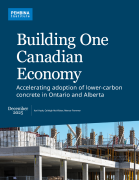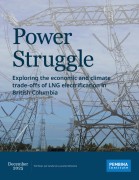The architects of the GDP — John Maynard Keynes (U.K.) and Simon Küznets (U.S.) — did caution against using GDP as a measure of the welfare of a nation. In 1962 Küznets lamented that "the welfare of a nation can scarcely be inferred from a measurement of national income as defined by the GDP…goals for 'more' growth should specify of what and for what."
Some 32 years after Simon Küznets' lament, Redefining Progress was established to address the challenge Küznets posed. This economic research think tank developed the Genuine Progress Indicator, or GPI. Developed by Clifford Cobb, and co-authored by Ted Halstead and Jonathan Rowe, the 1994 U.S. GPI results created a minor tremor in the U.S. economic machine. Genuine progress was considerably different than years of torrid economic growth. For the first time, a holistic measure of the welfare of a nation had been constructed — revealing the true state of the nation's natural, social, human and human-made capital. Mainstream media were lukewarm about these new ideas, wondering what the GPI had to do with the Dow Jones Industrial Average reaching new phoenix highs. For a nation so obsessed with economic performance, this cold shower was strange but honest. Today, the economic mantra that more economic growth (more production; more consumption) and increasing productivity automatically leads to improved well-being, continues despite an honest accounting of the state of real wealth.
The GPI gives concrete expression to something many Canadians and Americans sense about the economy; that we are living off natural, human and social capital. We are cannibalizing both the social structure and the natural habitat to keep the GDP growing at the rate the experts and money markets deem necessary. Yet the nation's economic reportage and debate proceed as though this erosion of real wealth does not exist. The indicators that should alert us to such tendencies serve to hide them instead.
Furthermore, there is growing disconnect between real wealth (as embodied by the GPI) and financial wealth (measured by the U.S. stock market capitalization value, the U.S. GDP and U.S. national debt). David Korten's Post-Corporate World provided inspiration for the following graph. We provided the actual data and produced Figure 2 showing the gulf between financial-fiat wealth and real wealth. This reaffirms our intuition that the world of finance and global capitalism is hopelessly out of touch with achieving genuine progress.









